The power of ‘nature tech’ – 5 innovative nature-based solutions fighting the climate crisis
Greenhouse
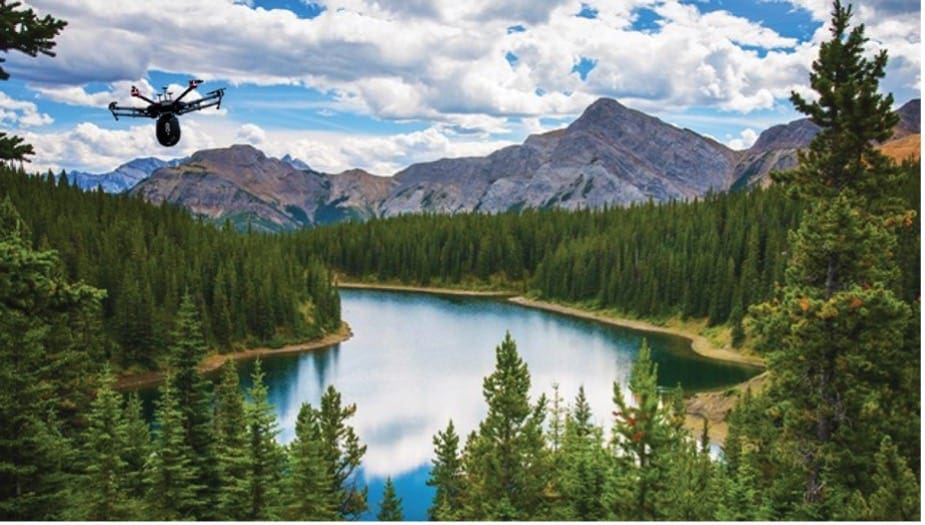
There’s no net zero without nature. That was the key takeaway from last year’s COP26, and nature is again on the agenda at both COP27 in Egypt this coming November, and at the crucial nature- and biodiversity-based UN CBD COP15 summit in Canada in December (learn what all those letters stand for in our explainer).
Because biodiversity and nature are so crucial to the fight for the climate, there’s a fast-growing field of innovators developing technologies to help deliver climate crisis mitigation and nature recovery at the urgent speed these twin crises require. As the international community increasingly recognizes the importance of protecting and restoring ecosystems, tools to augment these nature-based solutions are gaining prominence. And that’s nature tech.
 Founders Bryce Jones, Angelique Ahlstrom and Cameron Jones of Canadian-based Flash Forest want to plant more than 1 billion trees by 2028: drones will allow them to plant at 10 times the rate and a fraction of the cost of human labour. Plus, drones can reforest inaccessible and potentially dangerous locations such as post-wildfire sites. As well as delivering seed pods, the drones map and monitor projects, providing follow-up data on reforestation success.
Nature tech benefits: the faster reforestation occurs, the faster animal species can repopulate and the faster carbon can be sequestered by the growing trees. The increasingly frequent occurrence of wildfires as well as drought, disease and invasive pests are threatening the ongoing viability of forest-based carbon offset projects. The ability to regenerate at speed could be crucial to staying ahead of these impacts so that nature-based solutions can fulfil their critical role in climate change mitigation.
2. NatureMetrics: accelerating molecular methods of species and ecosystem monitoring
Founders Bryce Jones, Angelique Ahlstrom and Cameron Jones of Canadian-based Flash Forest want to plant more than 1 billion trees by 2028: drones will allow them to plant at 10 times the rate and a fraction of the cost of human labour. Plus, drones can reforest inaccessible and potentially dangerous locations such as post-wildfire sites. As well as delivering seed pods, the drones map and monitor projects, providing follow-up data on reforestation success.
Nature tech benefits: the faster reforestation occurs, the faster animal species can repopulate and the faster carbon can be sequestered by the growing trees. The increasingly frequent occurrence of wildfires as well as drought, disease and invasive pests are threatening the ongoing viability of forest-based carbon offset projects. The ability to regenerate at speed could be crucial to staying ahead of these impacts so that nature-based solutions can fulfil their critical role in climate change mitigation.
2. NatureMetrics: accelerating molecular methods of species and ecosystem monitoring
 UK-based NatureMetrics, founded by Dr Kat Bruce, Prof. Doug Yu and Prof. Alfried Vogler, is accelerating the use of molecular methods of species and ecosystem monitoring for the purposes of conservation, ecosystem restoration and Environmental Impact Assessment. (If that’s too much science, the company the company can identify Species from Faeces…)
DNA metabarcoding allows NatureMetrics to identify species present in environmental DNA (eDNA) samples taken from water, sediment or soil, providing a comprehensive assessment of biological diversity. eDNA analysis represents an important development for conservation and natural climate solutions because it produces detailed data on baseline levels of biodiversity and changes to a biological community in response to management practices.
Nature tech benefits: local stakeholders can easily carry out sampling for ongoing monitoring, and benefits are particularly apparent for landscape-level surveys, such as the analysis NatureMetrics carried out for WWF of samples from the Peruvian Amazon, in which 675 species of vertebrate fauna were identified. The technique is non-invasive, more accurate, less expensive and less labour intensive compared to traditional surveying methods.
3. Chloris Geospatial: improving the accuracy of carbon sequestration data
UK-based NatureMetrics, founded by Dr Kat Bruce, Prof. Doug Yu and Prof. Alfried Vogler, is accelerating the use of molecular methods of species and ecosystem monitoring for the purposes of conservation, ecosystem restoration and Environmental Impact Assessment. (If that’s too much science, the company the company can identify Species from Faeces…)
DNA metabarcoding allows NatureMetrics to identify species present in environmental DNA (eDNA) samples taken from water, sediment or soil, providing a comprehensive assessment of biological diversity. eDNA analysis represents an important development for conservation and natural climate solutions because it produces detailed data on baseline levels of biodiversity and changes to a biological community in response to management practices.
Nature tech benefits: local stakeholders can easily carry out sampling for ongoing monitoring, and benefits are particularly apparent for landscape-level surveys, such as the analysis NatureMetrics carried out for WWF of samples from the Peruvian Amazon, in which 675 species of vertebrate fauna were identified. The technique is non-invasive, more accurate, less expensive and less labour intensive compared to traditional surveying methods.
3. Chloris Geospatial: improving the accuracy of carbon sequestration data
 US start-up Chloris Geospatial, headed by Marco Albani and Dr. Alessandro Baccini, aims to make strides in the accuracy of carbon sequestration data available to the private sector.
Natural carbon sinks such as forests must be protected and restored if we are to meet the 1.5C Paris Agreement goal, while halting the crisis of biodiversity loss and maintaining the myriad benefits that humans draw from nature. Carbon offset schemes are a critical source of finance for the conservation of ecosystems and their services, but have been impeded by difficulties and inconsistencies in the quantification of carbon stocks. Chloris Geospatial measures changes to carbon stocks in aboveground biomass at the pixel level using a combination remote sensing, machine learning and AI backed by ecological science.
Nature-based benefits: data of this calibre is instrumental to creating a high-integrity voluntary carbon market based on transparency and trust between project developers, the private sector and the public. Long time-series carbon mapping at a jurisdictional level, for example, will address one of the fundamental challenges faced by offset projects by providing the ability to monitor leakage.
4. SPUN: building a global database of mycorrhizal funghi
US start-up Chloris Geospatial, headed by Marco Albani and Dr. Alessandro Baccini, aims to make strides in the accuracy of carbon sequestration data available to the private sector.
Natural carbon sinks such as forests must be protected and restored if we are to meet the 1.5C Paris Agreement goal, while halting the crisis of biodiversity loss and maintaining the myriad benefits that humans draw from nature. Carbon offset schemes are a critical source of finance for the conservation of ecosystems and their services, but have been impeded by difficulties and inconsistencies in the quantification of carbon stocks. Chloris Geospatial measures changes to carbon stocks in aboveground biomass at the pixel level using a combination remote sensing, machine learning and AI backed by ecological science.
Nature-based benefits: data of this calibre is instrumental to creating a high-integrity voluntary carbon market based on transparency and trust between project developers, the private sector and the public. Long time-series carbon mapping at a jurisdictional level, for example, will address one of the fundamental challenges faced by offset projects by providing the ability to monitor leakage.
4. SPUN: building a global database of mycorrhizal funghi
 Global nonprofit SPUN also utilises machine learning algorithms to map biodiversity and carbon storage, with the added challenge of their target being below ground. SPUN (‘the Society for the Protection of Underground Networks’) aims to build a global database of the presence of mycorrhizal fungi in order to identify areas of high conservation priority and is carrying out ground-truthing of its model predictions by collecting samples for DNA sequencing.
Up to 90% of all plant species form symbioses with mycorrhizal fungi: the underground part of mushrooms, mycelium, which colonise root systems and create mycorrhizal networks throughout the soil that access and transport nutrients to exchange with plants for carbon. Mycorrhizal networks also provide protection from pathogens and increase plant tolerance to pollutants. Plus, a single gram of soil can contain up to 90 meters of mycelium, comprising a significant global store of carbon.
Nature-based benefits: SPUN’s underground mapping efforts help to compose a highly detailed picture of the biodiversity and carbon present in the world’s ecosystems, the better to accurately assign value, guide human activities and measure progress towards goals to reverse nature loss and mitigate climate change.
5. Carbo Culture: capturing carbon to store underground
Global nonprofit SPUN also utilises machine learning algorithms to map biodiversity and carbon storage, with the added challenge of their target being below ground. SPUN (‘the Society for the Protection of Underground Networks’) aims to build a global database of the presence of mycorrhizal fungi in order to identify areas of high conservation priority and is carrying out ground-truthing of its model predictions by collecting samples for DNA sequencing.
Up to 90% of all plant species form symbioses with mycorrhizal fungi: the underground part of mushrooms, mycelium, which colonise root systems and create mycorrhizal networks throughout the soil that access and transport nutrients to exchange with plants for carbon. Mycorrhizal networks also provide protection from pathogens and increase plant tolerance to pollutants. Plus, a single gram of soil can contain up to 90 meters of mycelium, comprising a significant global store of carbon.
Nature-based benefits: SPUN’s underground mapping efforts help to compose a highly detailed picture of the biodiversity and carbon present in the world’s ecosystems, the better to accurately assign value, guide human activities and measure progress towards goals to reverse nature loss and mitigate climate change.
5. Carbo Culture: capturing carbon to store underground
 Underground carbon storage is the focus of Californian Carbo Culture’s founders Henrietta Moon and Chris Carstens, who have developed a new generation of biochar reactors with the aim of burying 1 billion tons of CO₂ annually.
Making biochar uses high amounts of pressure and heat to convert plant waste into ultra-stable carbon material. Carbo Culture’s technology overcomes existing issues with scaling this process, which should allow for a viable commercial operation that will produce carbon offsets and useable heat. As well as capturing carbon, biochar is a soil amendment with beneficial properties for plant health.
Nature-based benefits: large-scale biochar production could have relevance for ecosystem restoration and conservation, by helping to establish plant communities on degraded land, its potential for use in remediation where contamination is present, and by reducing the pressure of agricultural expansion (biochar has been shown to increase crop productivity).
This month Greenhouse helped Nature4Climate to launch their white paper on nature tech: What You Can Measure You Can Manage: How nature tech can help us solve the climate and nature crises. This was covered by Greenbiz and includes an interview with Shyla Raghav, co-founder of TIME’s new CO2 initiative.
Underground carbon storage is the focus of Californian Carbo Culture’s founders Henrietta Moon and Chris Carstens, who have developed a new generation of biochar reactors with the aim of burying 1 billion tons of CO₂ annually.
Making biochar uses high amounts of pressure and heat to convert plant waste into ultra-stable carbon material. Carbo Culture’s technology overcomes existing issues with scaling this process, which should allow for a viable commercial operation that will produce carbon offsets and useable heat. As well as capturing carbon, biochar is a soil amendment with beneficial properties for plant health.
Nature-based benefits: large-scale biochar production could have relevance for ecosystem restoration and conservation, by helping to establish plant communities on degraded land, its potential for use in remediation where contamination is present, and by reducing the pressure of agricultural expansion (biochar has been shown to increase crop productivity).
This month Greenhouse helped Nature4Climate to launch their white paper on nature tech: What You Can Measure You Can Manage: How nature tech can help us solve the climate and nature crises. This was covered by Greenbiz and includes an interview with Shyla Raghav, co-founder of TIME’s new CO2 initiative.


What does nature tech actually mean?
Nature tech is a term for innovations that accelerate and support nature-based solutions. It can encompass satellite monitoring, drone technology, AI, genomic sequencing, blockchain and more, doing everything from reforestation by drone to gathering data via remote sensing or environmental DNA analysis. It’s not without its issues. Take blockchain networks, which are inherently energy-intensive, or the complexity of ecosystems – the very nature of nature makes it difficult to produce accurate data, a barrier to attracting finance and realising the full potential of nature-based solutions. The goal for nature tech is to enable trustworthy monitoring, reporting and verification of project outcomes, through advanced methods of data gathering and analysis. Reliable data can in turn inform project design and facilitate further developments, such as blockchain smart contracts, which in theory could facilitate transparent and direct transactions between carbon offset buyers and local communities, increasing the agency of the latter in a sector that has come under criticism for its negligence towards Indigenous rights. Because biodiversity and nature are so crucial to the fight for the climate, there’s a fast-growing field of innovators developing technologies to help deliver climate crisis mitigation and nature recovery at the urgent speed these twin crises require. As the international community increasingly recognizes the importance of protecting and restoring ecosystems, tools to augment these nature-based solutions are gaining prominence. And that’s nature tech. Here, we profile five innovative nature tech companies with promising models for accelerating solutions to both nature restoration and climate crisis mitigation:- Flash Forest: pioneering drone technology
- NatureMetrics: accelerating methods of ecosystem monitoring
- Chloris Geospatial: improving accuracy of carbon sequestration data
- SPUN: building a global database of mycorrhizal funghi
- Carbo Culture: capturing carbon to store underground
1. Flash Forest: pioneering drone technology
 Founders Bryce Jones, Angelique Ahlstrom and Cameron Jones of Canadian-based Flash Forest want to plant more than 1 billion trees by 2028: drones will allow them to plant at 10 times the rate and a fraction of the cost of human labour. Plus, drones can reforest inaccessible and potentially dangerous locations such as post-wildfire sites. As well as delivering seed pods, the drones map and monitor projects, providing follow-up data on reforestation success.
Nature tech benefits: the faster reforestation occurs, the faster animal species can repopulate and the faster carbon can be sequestered by the growing trees. The increasingly frequent occurrence of wildfires as well as drought, disease and invasive pests are threatening the ongoing viability of forest-based carbon offset projects. The ability to regenerate at speed could be crucial to staying ahead of these impacts so that nature-based solutions can fulfil their critical role in climate change mitigation.
2. NatureMetrics: accelerating molecular methods of species and ecosystem monitoring
Founders Bryce Jones, Angelique Ahlstrom and Cameron Jones of Canadian-based Flash Forest want to plant more than 1 billion trees by 2028: drones will allow them to plant at 10 times the rate and a fraction of the cost of human labour. Plus, drones can reforest inaccessible and potentially dangerous locations such as post-wildfire sites. As well as delivering seed pods, the drones map and monitor projects, providing follow-up data on reforestation success.
Nature tech benefits: the faster reforestation occurs, the faster animal species can repopulate and the faster carbon can be sequestered by the growing trees. The increasingly frequent occurrence of wildfires as well as drought, disease and invasive pests are threatening the ongoing viability of forest-based carbon offset projects. The ability to regenerate at speed could be crucial to staying ahead of these impacts so that nature-based solutions can fulfil their critical role in climate change mitigation.
2. NatureMetrics: accelerating molecular methods of species and ecosystem monitoring
 UK-based NatureMetrics, founded by Dr Kat Bruce, Prof. Doug Yu and Prof. Alfried Vogler, is accelerating the use of molecular methods of species and ecosystem monitoring for the purposes of conservation, ecosystem restoration and Environmental Impact Assessment. (If that’s too much science, the company the company can identify Species from Faeces…)
DNA metabarcoding allows NatureMetrics to identify species present in environmental DNA (eDNA) samples taken from water, sediment or soil, providing a comprehensive assessment of biological diversity. eDNA analysis represents an important development for conservation and natural climate solutions because it produces detailed data on baseline levels of biodiversity and changes to a biological community in response to management practices.
Nature tech benefits: local stakeholders can easily carry out sampling for ongoing monitoring, and benefits are particularly apparent for landscape-level surveys, such as the analysis NatureMetrics carried out for WWF of samples from the Peruvian Amazon, in which 675 species of vertebrate fauna were identified. The technique is non-invasive, more accurate, less expensive and less labour intensive compared to traditional surveying methods.
3. Chloris Geospatial: improving the accuracy of carbon sequestration data
UK-based NatureMetrics, founded by Dr Kat Bruce, Prof. Doug Yu and Prof. Alfried Vogler, is accelerating the use of molecular methods of species and ecosystem monitoring for the purposes of conservation, ecosystem restoration and Environmental Impact Assessment. (If that’s too much science, the company the company can identify Species from Faeces…)
DNA metabarcoding allows NatureMetrics to identify species present in environmental DNA (eDNA) samples taken from water, sediment or soil, providing a comprehensive assessment of biological diversity. eDNA analysis represents an important development for conservation and natural climate solutions because it produces detailed data on baseline levels of biodiversity and changes to a biological community in response to management practices.
Nature tech benefits: local stakeholders can easily carry out sampling for ongoing monitoring, and benefits are particularly apparent for landscape-level surveys, such as the analysis NatureMetrics carried out for WWF of samples from the Peruvian Amazon, in which 675 species of vertebrate fauna were identified. The technique is non-invasive, more accurate, less expensive and less labour intensive compared to traditional surveying methods.
3. Chloris Geospatial: improving the accuracy of carbon sequestration data
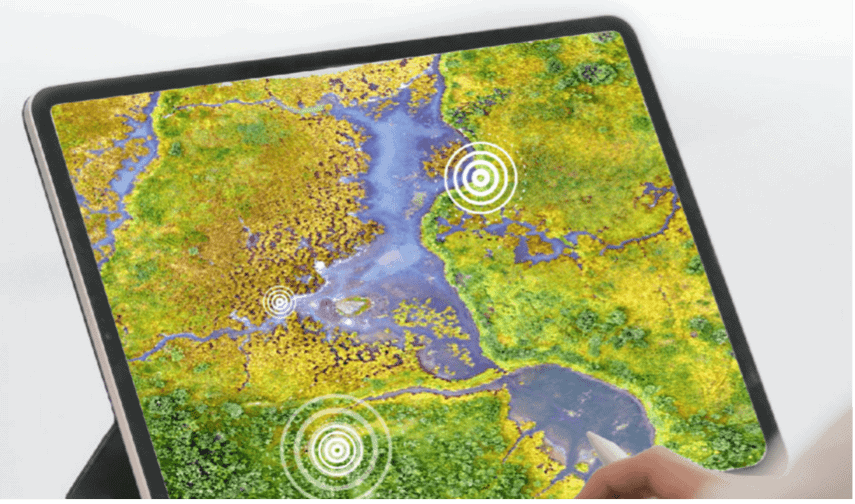 US start-up Chloris Geospatial, headed by Marco Albani and Dr. Alessandro Baccini, aims to make strides in the accuracy of carbon sequestration data available to the private sector.
Natural carbon sinks such as forests must be protected and restored if we are to meet the 1.5C Paris Agreement goal, while halting the crisis of biodiversity loss and maintaining the myriad benefits that humans draw from nature. Carbon offset schemes are a critical source of finance for the conservation of ecosystems and their services, but have been impeded by difficulties and inconsistencies in the quantification of carbon stocks. Chloris Geospatial measures changes to carbon stocks in aboveground biomass at the pixel level using a combination remote sensing, machine learning and AI backed by ecological science.
Nature-based benefits: data of this calibre is instrumental to creating a high-integrity voluntary carbon market based on transparency and trust between project developers, the private sector and the public. Long time-series carbon mapping at a jurisdictional level, for example, will address one of the fundamental challenges faced by offset projects by providing the ability to monitor leakage.
4. SPUN: building a global database of mycorrhizal funghi
US start-up Chloris Geospatial, headed by Marco Albani and Dr. Alessandro Baccini, aims to make strides in the accuracy of carbon sequestration data available to the private sector.
Natural carbon sinks such as forests must be protected and restored if we are to meet the 1.5C Paris Agreement goal, while halting the crisis of biodiversity loss and maintaining the myriad benefits that humans draw from nature. Carbon offset schemes are a critical source of finance for the conservation of ecosystems and their services, but have been impeded by difficulties and inconsistencies in the quantification of carbon stocks. Chloris Geospatial measures changes to carbon stocks in aboveground biomass at the pixel level using a combination remote sensing, machine learning and AI backed by ecological science.
Nature-based benefits: data of this calibre is instrumental to creating a high-integrity voluntary carbon market based on transparency and trust between project developers, the private sector and the public. Long time-series carbon mapping at a jurisdictional level, for example, will address one of the fundamental challenges faced by offset projects by providing the ability to monitor leakage.
4. SPUN: building a global database of mycorrhizal funghi
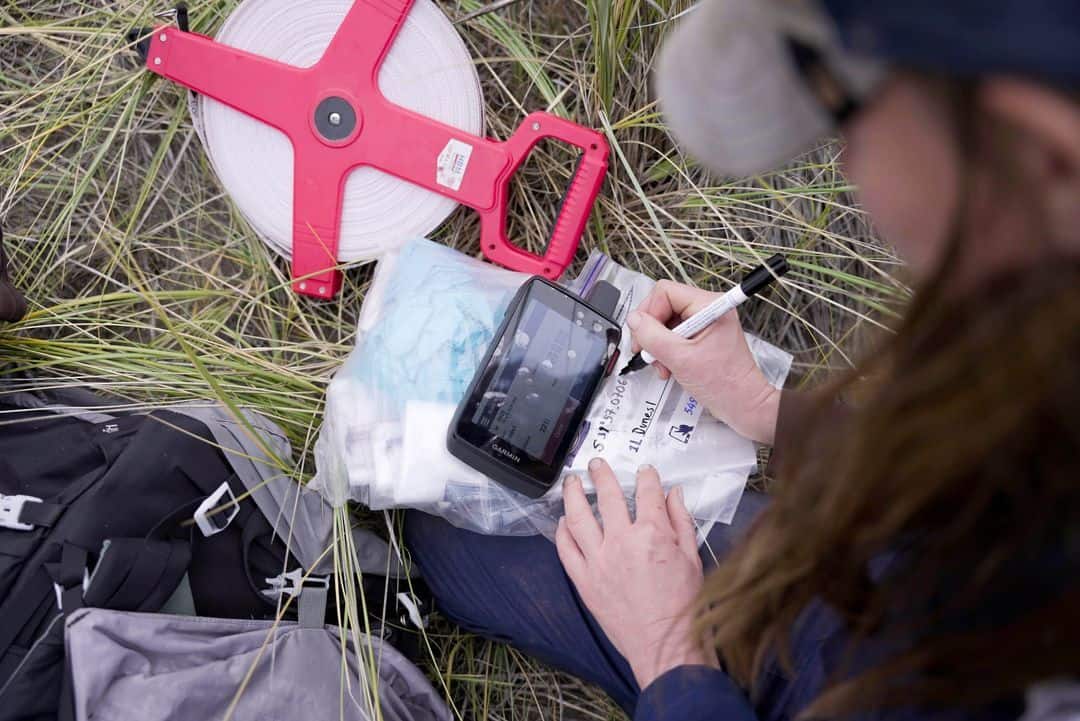 Global nonprofit SPUN also utilises machine learning algorithms to map biodiversity and carbon storage, with the added challenge of their target being below ground. SPUN (‘the Society for the Protection of Underground Networks’) aims to build a global database of the presence of mycorrhizal fungi in order to identify areas of high conservation priority and is carrying out ground-truthing of its model predictions by collecting samples for DNA sequencing.
Up to 90% of all plant species form symbioses with mycorrhizal fungi: the underground part of mushrooms, mycelium, which colonise root systems and create mycorrhizal networks throughout the soil that access and transport nutrients to exchange with plants for carbon. Mycorrhizal networks also provide protection from pathogens and increase plant tolerance to pollutants. Plus, a single gram of soil can contain up to 90 meters of mycelium, comprising a significant global store of carbon.
Nature-based benefits: SPUN’s underground mapping efforts help to compose a highly detailed picture of the biodiversity and carbon present in the world’s ecosystems, the better to accurately assign value, guide human activities and measure progress towards goals to reverse nature loss and mitigate climate change.
5. Carbo Culture: capturing carbon to store underground
Global nonprofit SPUN also utilises machine learning algorithms to map biodiversity and carbon storage, with the added challenge of their target being below ground. SPUN (‘the Society for the Protection of Underground Networks’) aims to build a global database of the presence of mycorrhizal fungi in order to identify areas of high conservation priority and is carrying out ground-truthing of its model predictions by collecting samples for DNA sequencing.
Up to 90% of all plant species form symbioses with mycorrhizal fungi: the underground part of mushrooms, mycelium, which colonise root systems and create mycorrhizal networks throughout the soil that access and transport nutrients to exchange with plants for carbon. Mycorrhizal networks also provide protection from pathogens and increase plant tolerance to pollutants. Plus, a single gram of soil can contain up to 90 meters of mycelium, comprising a significant global store of carbon.
Nature-based benefits: SPUN’s underground mapping efforts help to compose a highly detailed picture of the biodiversity and carbon present in the world’s ecosystems, the better to accurately assign value, guide human activities and measure progress towards goals to reverse nature loss and mitigate climate change.
5. Carbo Culture: capturing carbon to store underground
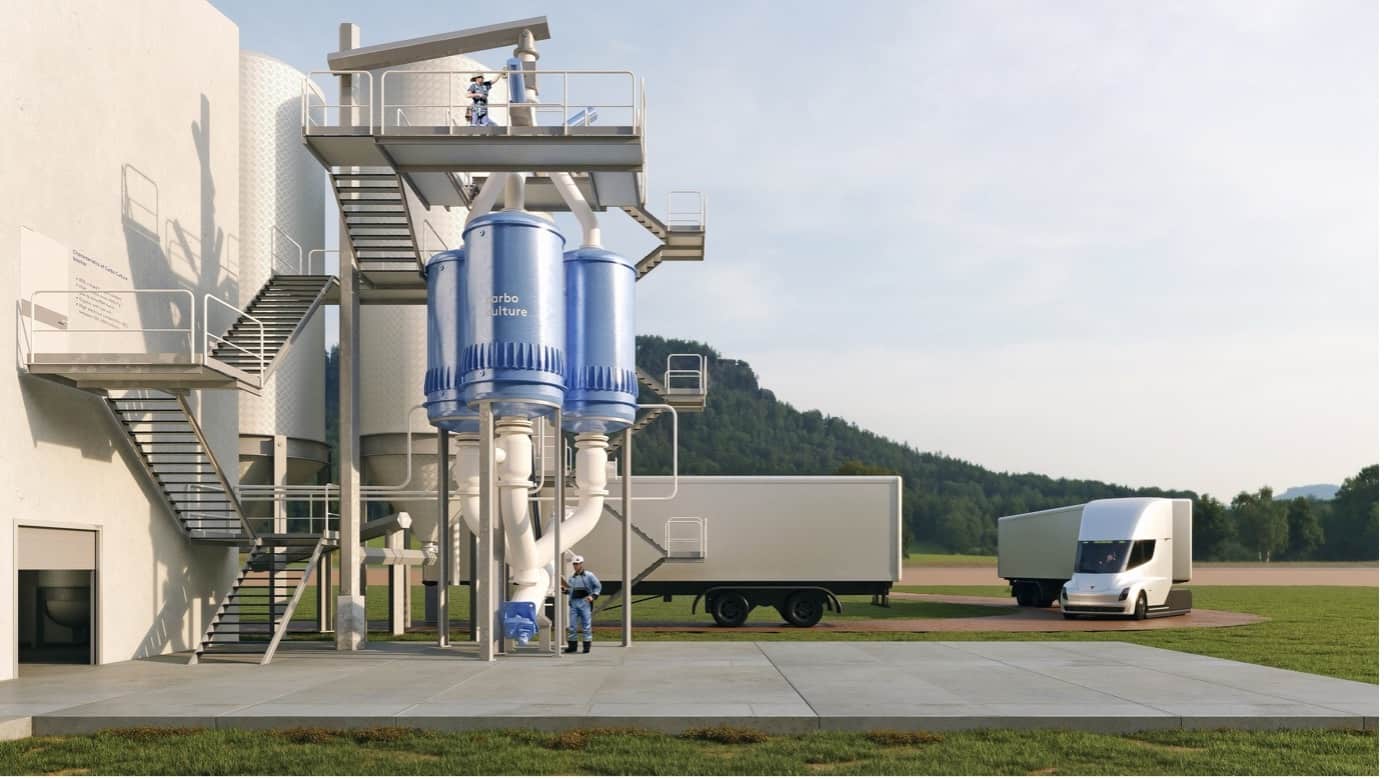 Underground carbon storage is the focus of Californian Carbo Culture’s founders Henrietta Moon and Chris Carstens, who have developed a new generation of biochar reactors with the aim of burying 1 billion tons of CO₂ annually.
Making biochar uses high amounts of pressure and heat to convert plant waste into ultra-stable carbon material. Carbo Culture’s technology overcomes existing issues with scaling this process, which should allow for a viable commercial operation that will produce carbon offsets and useable heat. As well as capturing carbon, biochar is a soil amendment with beneficial properties for plant health.
Nature-based benefits: large-scale biochar production could have relevance for ecosystem restoration and conservation, by helping to establish plant communities on degraded land, its potential for use in remediation where contamination is present, and by reducing the pressure of agricultural expansion (biochar has been shown to increase crop productivity).
This month Greenhouse helped Nature4Climate to launch their white paper on nature tech: What You Can Measure You Can Manage: How nature tech can help us solve the climate and nature crises. This was covered by Greenbiz and includes an interview with Shyla Raghav, co-founder of TIME’s new CO2 initiative.
Underground carbon storage is the focus of Californian Carbo Culture’s founders Henrietta Moon and Chris Carstens, who have developed a new generation of biochar reactors with the aim of burying 1 billion tons of CO₂ annually.
Making biochar uses high amounts of pressure and heat to convert plant waste into ultra-stable carbon material. Carbo Culture’s technology overcomes existing issues with scaling this process, which should allow for a viable commercial operation that will produce carbon offsets and useable heat. As well as capturing carbon, biochar is a soil amendment with beneficial properties for plant health.
Nature-based benefits: large-scale biochar production could have relevance for ecosystem restoration and conservation, by helping to establish plant communities on degraded land, its potential for use in remediation where contamination is present, and by reducing the pressure of agricultural expansion (biochar has been shown to increase crop productivity).
This month Greenhouse helped Nature4Climate to launch their white paper on nature tech: What You Can Measure You Can Manage: How nature tech can help us solve the climate and nature crises. This was covered by Greenbiz and includes an interview with Shyla Raghav, co-founder of TIME’s new CO2 initiative.
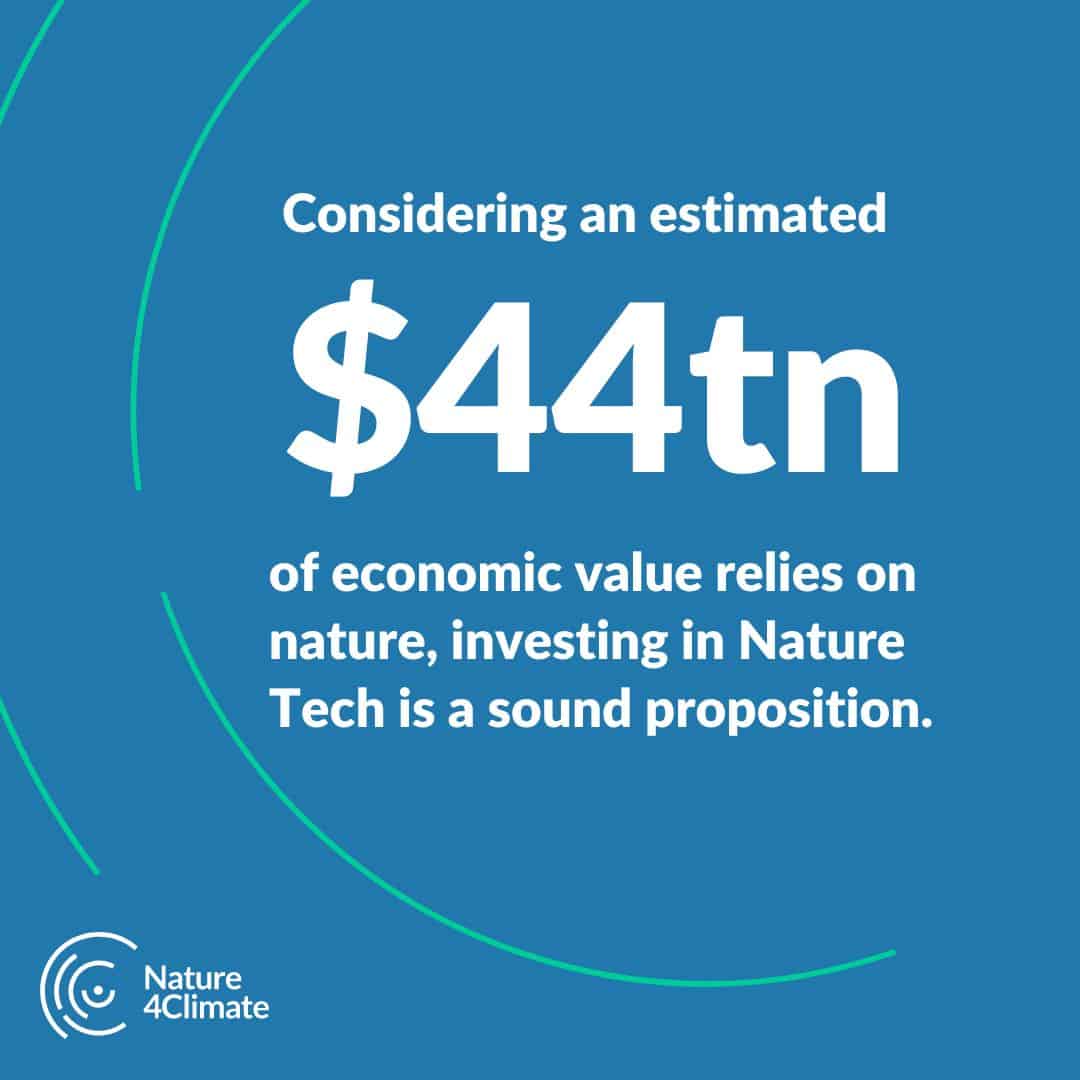

And for more Greenhouse Communications explainers, try:


